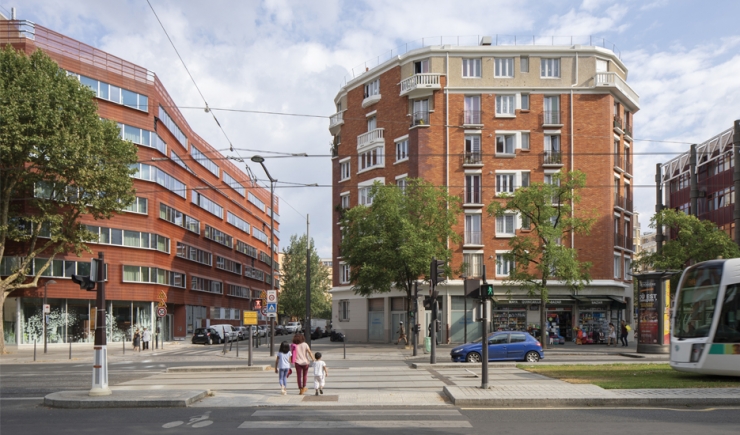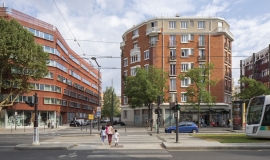367,000 people live in City of Paris Urban Cohesion Policy neighbourhoods, that is 17% of the Parisian population, half of these people are found in priority neighbourhoods and the other half in secondary priority neighbourhoods. Apur has published an analysis of the evolution and issues within these neighbourhoods, as well as a reference framework to assist in assessing the 2015-2020 City Contract.

Carried out in the context of work linked to the mid-way assessment of the 2015-2020 City Contract, the analysis of priority neighbourhoods shows that the gap between these areas and the rest of Paris is tending to narrow. The proportion of people with no higher education degree is falling faster than the Parisian average. There is also a greater drop in low standard housing. Positive developments in terms of school achievements, the creation of businesses and the commercial dynamic have also been observed.
However, apart from these trends, the social gap remains large and the neighbourhoods are marked by enormous disparities. This work reveals the growing difficulty linked to employment and professional integration in neighbourhoods where the unemployment rate is 19% compared with the average 12% in the rest of Paris. Light was also shed on an issue linked to the unemployment of senior citizens, with their proportion among job seekers rising sharply. Households receiving RSA benefit make up 12% of households compared with 5% in Paris as a whole.
In addition, apart from statistical analyses, other issues came to the fore while exchanging with local key players. They are linked to the occupation of public space, preventive measures and public tranquility and emerged particularly in the north-east Parisian neighbourhoods. The rise in poverty and homelessness is also addressed.
This work of analysing the evolution and issues in priority neighbourhoods forms the first volume of a series of publications:
- Part 1: analyses the specific aspects of neighbourhoods covered by the City of Paris Social Cohesion Policy and compares them with priority neighbourhoods in the whole of Ile-de-France and France.
- Part 2: analyses recent trends in priority neighbourhoods and secondary priority neighbourhoods in relation to the evolution underway in the Parisian territory as a whole.
- Part 3: analyses districts experiencing difficulties which are outside the geographic boundaries of priority areas,
- as well as analysing those within the priority and secondary priority territories district by district.
The second volume focuses on the assessment framework which explains in detail the objectives decided upon by partners of the City Contract, associated initiatives, the expected results and the indicators for measuring the implementation of initiatives and their impact.
Access parts 1 to 3 as well as the territorial analyses district by district and the assessment framework
Press contact: Quentin Treton : mail – 01 83 97 63 59


